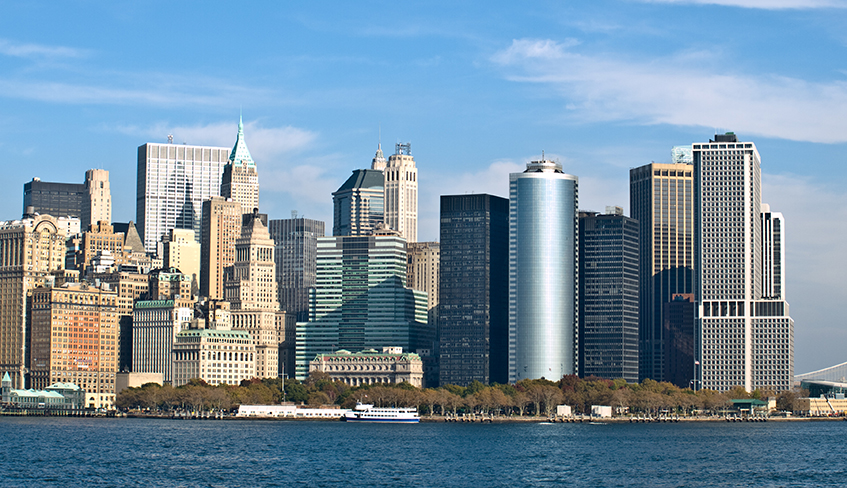The IESE Business School’s 2017 Cities in Motion Index revealed good news for some of the world’s urban hubs but what really makes a city smart?
1. The world’s smartest cities have to be high performers across the board
The opposite is actually true. To have the resources and fire power to be able to support an intelligent infrastructure, the smartest global cities often fall down on other key areas. In the 2017 IESE Business School’s annual rankings of the world’s smartest cities, New York comes in at number one, followed by London in second place and Paris in third. This is out of a total of 180 cities across 80 countries. While all three top-performing cities scored highly on criteria including economy, human capital and international outreach, their social cohesion scores were poor and, in some cases, right at the bottom of the pile. New York came in at 161st, London at 129th and Paris at 91st. The report stated that these scores were a natural result of these particular cities’ “statuses as international megacities.”
2. Only world-leading economic hubs can be smart cities
While large, global hubs tend to dominate the top of the league, despite falling down in areas such as social cohesion, leading smart cities are not always defined by their positions as financial powerhouses. Copenhagen is a prime example. Coming in at number 11 in the 2016 IESE Business School’s annual ranking, the Danish capital ranked above the likes of Washington DC, Los Angeles, Melbourne and Singapore after climbing eight places. The report put the city’s success down to exceptional and unrivalled urban planning (it scored the highest out of all 180 global cities in the urban planning category) and social cohesion.
3. Intelligent cities are an unequivocally good thing
There is little doubt that smart buildings and cities are the way forward. They epitomise social and digital progression and digitisation will soon become the foundation on which successful global cities are built. But this does not mean there are no negative side effects. And these should be identified, carefully considered and an attempt made to combat the potential fall-out. A Deloitte report into the future of smart cities identifies the following issue as an example: “Although smart solutions have the potential to connect people and increase social cohesion, the darker side is the risk of smart city benefits not being reaped by all groups in our society alike.” The report then identifies three main problems: the fact that some social groups may have a lack of “digital savviness” or lack of access to modern digital connections and equipment; the increased risk of people becoming ill due to digital pressures and overload; and the possibility that smart solutions can be used by groups to organise themselves to create digital gated communities which could threaten social cohesion and inclusivity. The report calls on governments and businesses to work together to tackle these issues.
4. All new technologies are disruptive
This is a myth that has been circulating for a while now. The idea that any digital transformation must, by default, be disruptive. Many new innovations are referred to as “the Uber of…[whatever sector it is ‘disrupting’]”. In fact, there are a plethora of new systems, platforms and fresh ideas that would be far more accurately described as enablers. For almost two years, connectivity ratings system WiredScore has said it sees its role as helping the property industry rather than disrupting it. The group’s EMEA director William Newton says one of the reasons the company has slotted in so smoothly to the existing London infrastructure is that despite being a start-up, WiredScore is not a disruptor. He said: “The Wired certification has been successful because it is something that is really helping the sector. On one hand, you hear about disruptors which are trying to shake up the existing industry. The other kind of company is an enabler, like us. And an enabler fits neatly into the ecosystem and helps what everyone is already doing.”
5. A smart city is always a smart city
A more obvious myth, perhaps. A city can build up its credentials to become one of the smartest in the world but if it is not kept regularly updated and at the forefront of technological advancement, that city is likely to slip down the list as time goes on. Ultimately, it could eventually be written off as not being smart at all. It’s all about comparison. But keeping up with the cutting-edge tech alone will not be enough to keep a metropolis at its intelligence peak. Back to those IESE Business School smart city credentials and there are already examples emerging of cities that have suffered major setbacks. Between 2015 and 2016, Dublin fell 20 places from 16th to 36th because of a sudden poor social cohesion score, ironically most likely off the back of the city’s dramatic recovery post-global financial crisis. And Tokyo fell out of the top 10, dropping from eighth place to 12th, despite the fact it scored the highest out of all 181 cities for technology. Low scores for urban planning, governance, social cohesion and public management were enough to knock it down the list, regardless of the fact that, in pure tech terms, it is the world leader.
To send feedback, e-mail emily.wright@egi.co.uk or tweet @EmilyW_9 or @estatesgazette











